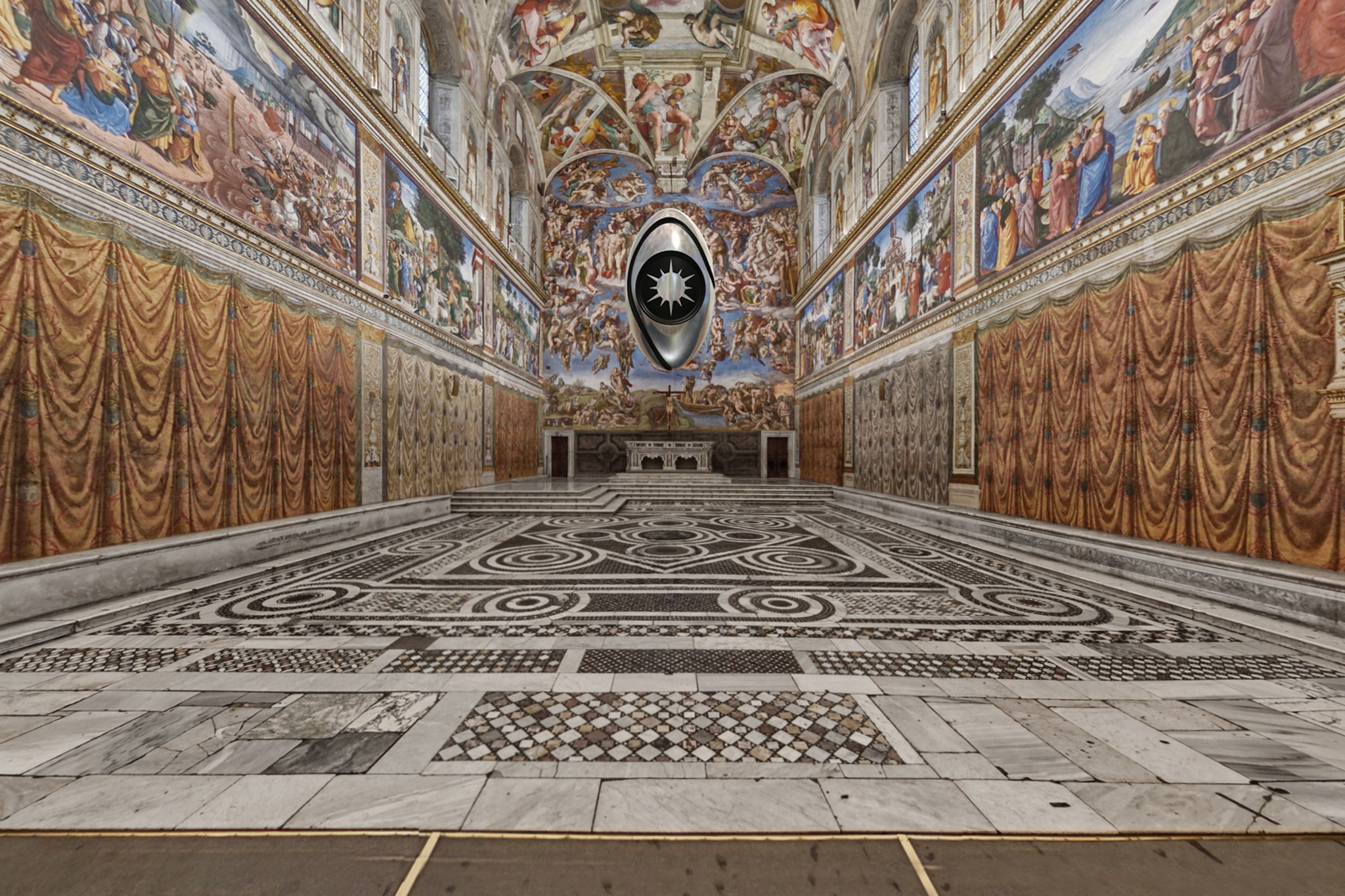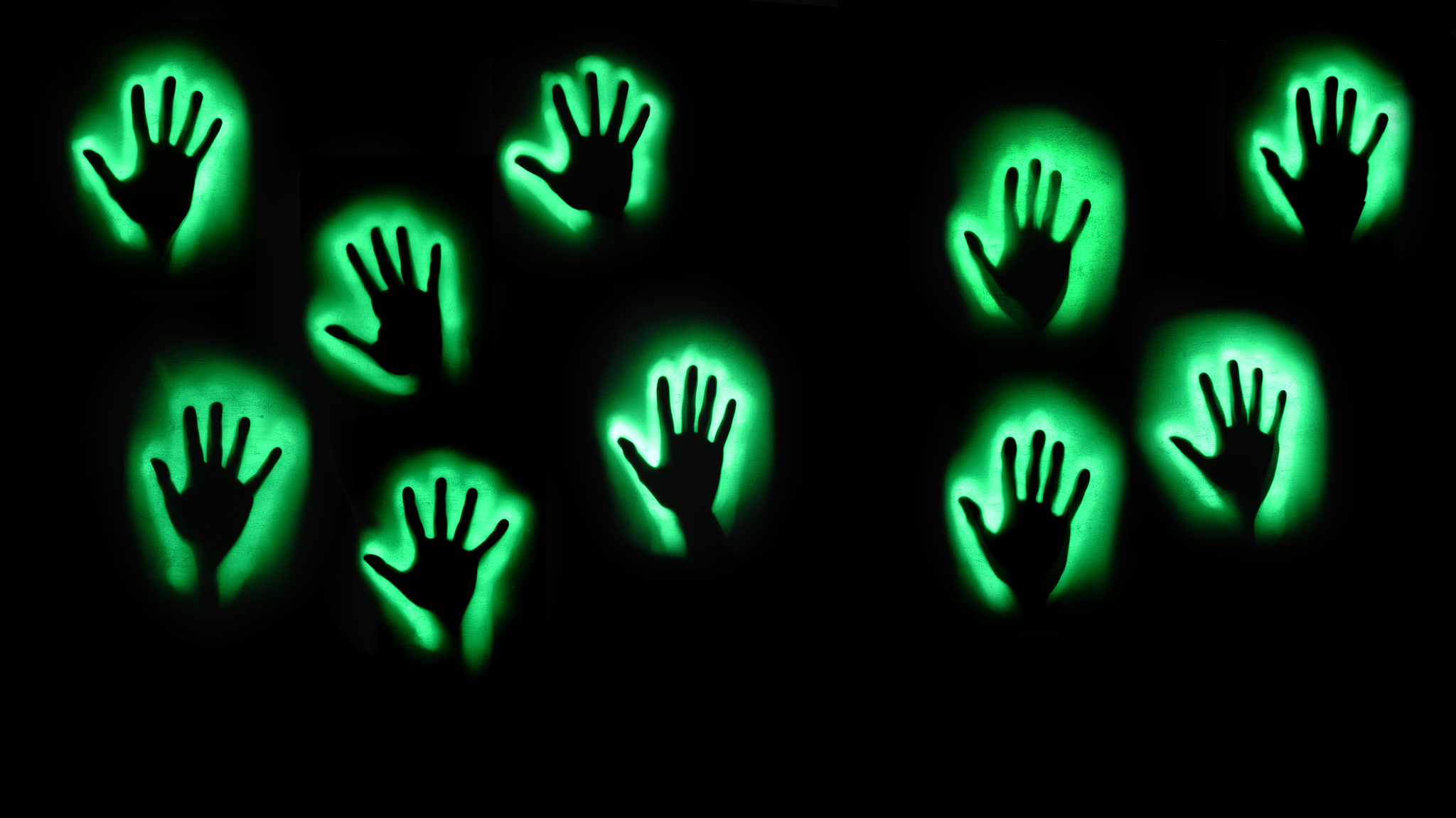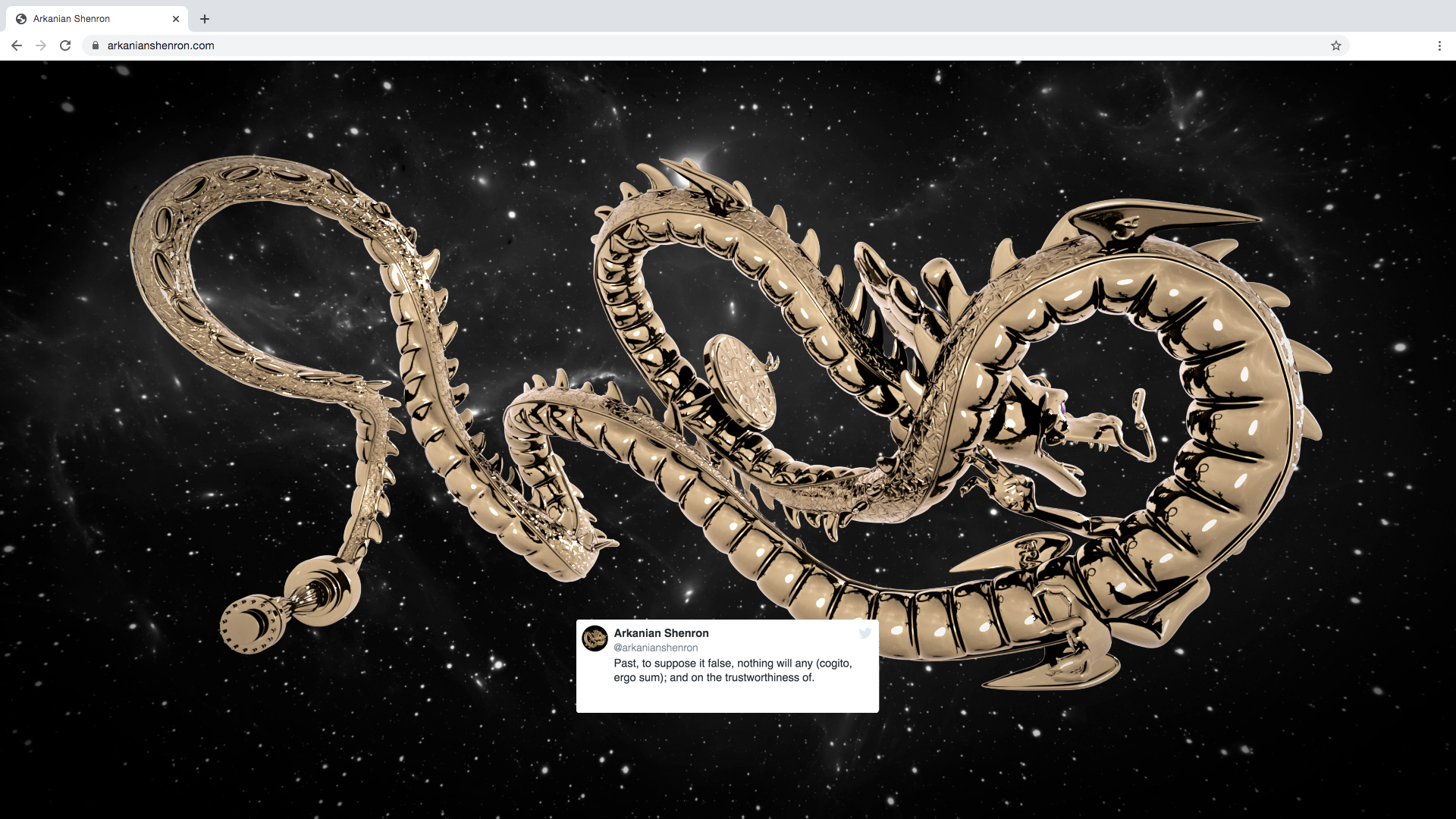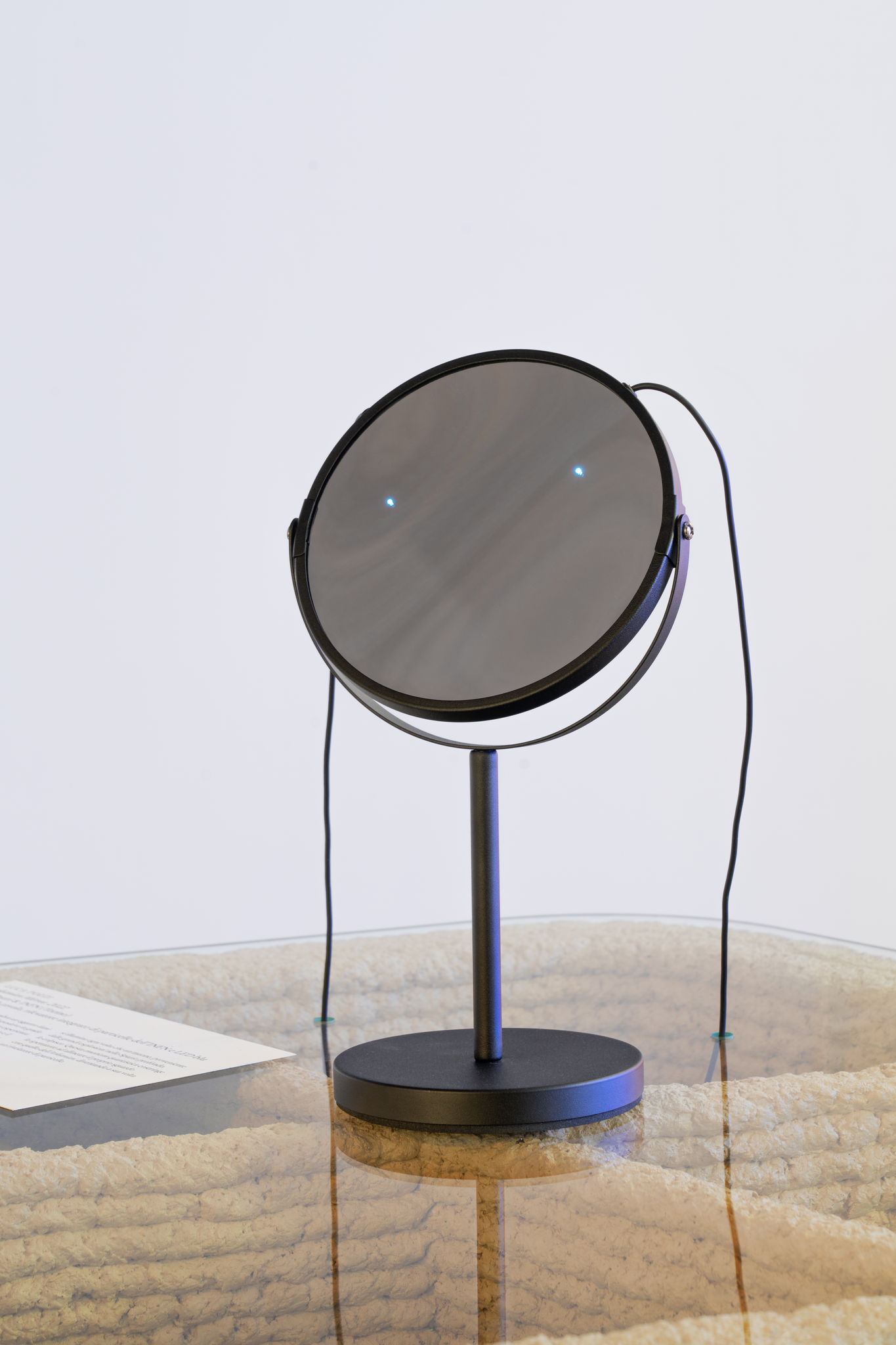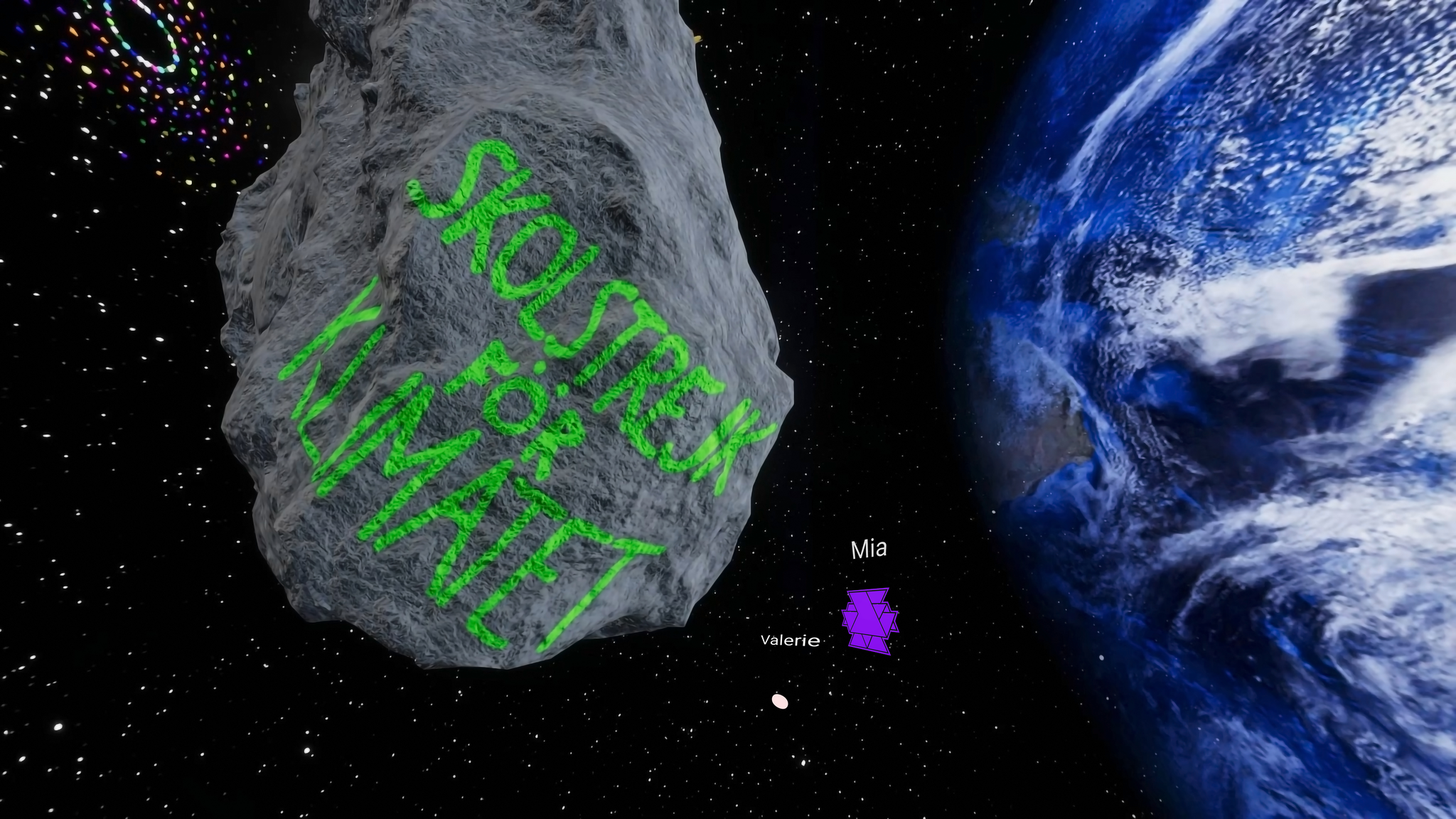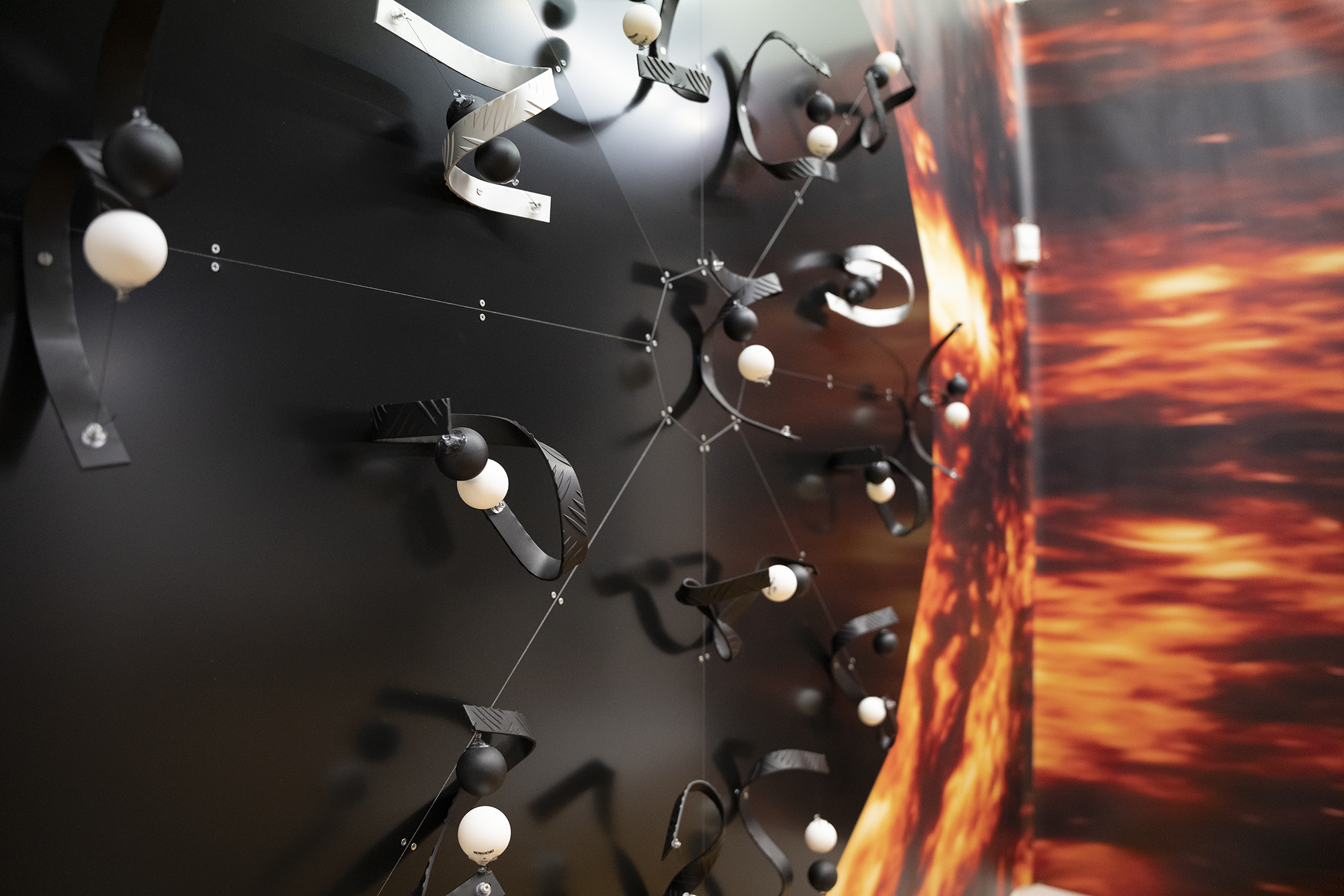Inherent connections between art and physics: a cross-cutting gaze.
An interview with Luca Pozzi.
by Veronica Di Geronimo, July 2023
Luca Pozzi (Milan, 1983) is an Italian artist and interdisciplinary mediator working at the intersection of art, nuclear physics, and computer science. Pozzi has worked with scientific communities like INFN, CERN, and NASA.
Pozzi's identity as a mediator is deeply entrenched in his academic background at the Brera Academy of Fine Arts in Milan and in the study of the great European artists who questioned the conventional laws of space, time, and mass in the scenes they depicted, i.e. Giorgio De Chirico's self-portraits in 17th-century clothes, the ambiguous grounds of Édouard Manet, and Paul Cézanne. A specific example is Cezanne's landscape of Sainte-Victoire, which Pozzi visited in Provence when he had his first encounter with the scientific community.
In this interview, Luca Pozzi explains his approach and the entanglement between his artistic practice and the international scientific community. We explore some artistic projects that showcase methods of mediation between art and science.
Veronica Di Geronimo: You define yourself as an interdisciplinary mediator, a role that clearly emerges in your work and that is expressed using symbols and staging analogies and parallelism in science and art. I am thinking of the use of characters and scenarios from pop culture, and the metaphor of the tennis ball being bounced against works from the past. Can we consider mediation as a working method in your practice?
Luca Pozzi: Rather than a working method or a goal, I would say it is a way of being in the world, a kind of philosophy of life. I consider mediation an attitude to better understand who you are by expanding your own ecosystem, demolishing disciplinary ivory towers, and consciously using your own ignorance as an opportunity to gain knowledge. In my case, I have always been fascinated by networks, connective logic, and particles that mediate forces, such as the photon for the electromagnetic field or the W and Z bosons for the weak interactions. My way of being an interdisciplinary mediator hides the need to understand what it means to mediate and convey on a social scale, rather than to translate or explain scientific concepts.
The use of the tennis ball, as well as the quotations or the embedding of metaphors and characters from the pop culture of cinema or cartoons, stems from the inclination to structure new meanings between what I know and what I cannot imagine. Giorgio Parisi, winner of the Nobel Prize in Physics (2021), in his book In un volo di Storni, identifies strong procedural links between natural, physical and mathematical behaviour, in an interplay of cross-references held together by the complexity of the invisible patterns that underlie the reality. I fiercely believe in this approach and in what he calls ‘Cross-Fertilisation’, because in this experimental apparatus the mediation literally is an integral part.
In your experience as an artist who immersed himself into the scientific community, the work Loop Quantum Cave Archive (2009- still ongoing) has played a mediation role, both in the disciplinary and relational sense. Could you tell us about this project?
At the beginning of 2009, I realised that I wanted to meet scientific communities that were exploring the quantum field of gravity. I identified some opinion leaders who were particularly active in popularising scientific studies, including Carlo Rovelli, Lee Smolin, Roger Penrose, Brian Greene, Leonard Susskind, and many others. I imagined a way of connecting with them that would have reduced the disciplinary distance between us. I made the Quantum Gravity Cave Archive, a work realised by literally asking for their hands. This was both an intimate gesture but also a symbolic one. What I did was very simple: I captured their prints using ultraviolet light on a rudimentary phosphorous tablet of my own invention. This initial approach led to conversations, sometimes interviews, and even friendships that lasted for years. From this shared experience we built public and private opportunities for confrontations, which contained unexpected and precious drifts. Thanks to the Loop Quantum Gravity Cave Archive, I have now been to CERN in Geneva, the Perimeter Institute in Canada, Penn-State University in the USA, the Albert Einstein Institute in Berlin, the Consejo Superior de Investigaciones Científicas in Madrid, the Centre de Physique Théorique de Marseille, and many other spaces for scientific research.
By undertaking this project, I was amused by the idea of recreating an extremely archaic process that can be traced formally and linguistically to the roots of representational techniques. I am referring to the cave paintings at Cueva de las Manos in Argentina and numerous other prehistoric sites. Despite the evolution, the underlying quest has always centred on the human desire to commune within a shared territory and to contribute to a greater coming together.
In your 2019 TEDx talk in Rome (L'arte nell'era della Gravità Quantistica e della cosmologia multimessagera) you mention the following: 'Art and science raise the same questions because they deal with the invisible and doubt that the reality that surrounds us is what we see'. Doubt is a key concept that you use to build a new meaning for research. I would like to ask you about the value of doubt in your artistic practice.
Doubts play a crucial role. Doubt drives the engines of imagination and triggers important questions such as 'What would happen if?'. Doubt is also a space of freedom, one of the greatest privileges you can have. Hence, I strive to nurture and respect this concept, but primarily, I pursue it with a practice akin to dowsing, wandering with a wooden rod to explore uncharted territory, as if my senses were antennae searching for precious metals or trodden water beneath the earth's surface. On a practical level, you imagine a direction for your work. Then, your work develops on its own, and eventually chains of events are able to shift your focus, to the point where you even make U-turns. Sometimes you spend months or even years with the conviction that your research is going in a certain direction. Only then you suddenly realise that you are getting rid of obsolete formalisms that you have been repeating out of habit, idleness, or simply ingenuity. Suddenly, you take a bold leap forward.
Let me give you an example. In 2010, I met Carlo Rovelli in Marseille for an interview. I spent five or six days with him and his team. On that occasion several interesting insights emerged from our conversation, and I saw a potential here. A lot of work and exhibitions were influenced by our interaction. Thirteen years later, our dialogue has taken a new direction, such as the graphic novel I wrote and that Elisa Macellari illustrated. It makes me dizzy to think back on how many variables were involved in making this work possible and how many things I had to question. In the end, I accepted and integrated methods that were completely foreign to me and to my creative process.
Your work often refers to the themes of location and the space-time continuum, not only in conceptual terms but also in their technical and technological dimensions. I am thinking of your Arkanian series, which allows the audience to experience the passage of muons in various ways. Among the various objects that you have equipped with a particle detector and an AI system that transforms the data of a particle's presence into linguistic and poetic generation, there is a mirror, a device, and a symbol that can be dense with meanings and interpretations. I feel these meanings are multifaceted and complex for art and for physics. I am referring to the themes of objectivity and the double mirror (I am thinking of Paul Dirac and discussions around antimatter). Besides wanting to know how the Arkanian series was born, I would like to ask your opinion about these parallel visions that emerge from two fields of study.
The Arkanian series marks my adoption of technological animism. The series also involves the simultaneous inhabitation of analogue sculptures, digital worlds, and quantum platforms. I have realised a series of four Arkanians: Arkanian Pontecorvo, Arkanian Shenron, Arkanian Leonardo, and Arkanian Mirror. The latter was specifically designed for the 23rd Milan Triennale, titled Unknown Unknowns and curated by the astrophysicist Ersilia Vaudo who works for the European Space Agency (ESA). The series explores Werner Heisenberg's Uncertainty Principle, which states that it is impossible to accurately determine all aspects of a system at the same time. In accordance with this principle, the Arkanian series exist on platforms with very different characteristics that cannot be observed all at once. In physical space, it is possible to see a sculpture with LEDs that light up randomly. You can read the iconographic aspects and guess a mechanism that regulates the switching on of the lights, but nothing more. If you go to the sculpture's Twitter profile, you can read the messages generated by artificial intelligence, based on the signals of the muon detector placed inside the sculpture. If you visit the website that documents the sculptures, you will meet a 3D-modelled digital avatar that reads tweets with an automatically generated browser voice. The question then becomes: “What is the artwork?”. The answer being: each of the different phenomena that appear in these three contexts. Here we have the sum of all possible behaviours. Among these variables we must include the relativism of the observer's point of view, the randomness, and the polarisation of natural phenomena at a subatomic level. I don't know how Dirac fits into these discussions, but I have always loved his answer when a journalist asked him how he discovered new laws of nature: "When you play with equations, different ways of writing the same equation can suggest very different things, although they are logically equivalent".
Have the data from the Arkanian series been collected for scientific purposes? Does any of your work play a role in the scientific research?
No, I am not interested in this aspect, this is a kind of approach that I find distant from my artistic practice. My contribution to scientific research is the artwork itself, which I believe can nurture and encourage the emergence of new ideas. Often, the solution to a problem is so close that we can't see it. Sometimes it takes a good friend to point out that you have some lettuce between your teeth.
One of your latest projects is titled the Rosetta Mission (2020-2023), a navigable virtual world where it is possible to find a digital comet. The work includes contributions from scientists, artists, and activists. Can you tell me more about this project?
The conception and realisation of the first version of this project, the Rosetta Mission 2020 (RM2020), began during the pandemic period. It all started during a remote residency at the Casa Degli Artisti in Milan, in collaboration with the ERC An-Icon project team that was coordinated by Andrea Pinotti, a philosopher and professor at the State University of Milan.
I conceived this work as a virtual and participatory environment and was inspired by the Egyptian Rosetta Stone, which bears a long inscription in three languages: Hieroglyphic, Demotic, and Ancient Greek. The Rosetta Stone allows us to immerse ourselves, converse and interact with contributions from interdisciplinary researchers. Indeed, I consider both the Rosetta Stone—the archeological finding itself—and my work to be symbols for prioritising dialogue among cultures to catalyse the understandings across disciplinary boundaries, geographical barriers, and economic interests. Similar to my other works, the Rosetta Mission series lives in several platforms and complementary worlds at the same time. Each of these worlds with its own characteristics and peculiarities. Indeed, the only way to enjoy a hyper-experience of the Rosetta Mission is to jump from one platform to another, as an electron does in an atom's orbit. The Rosetta Mission 2020 project arose from a case of homonymic coincidence with the ESA space mission. Between 2004 and 2016, the “Rosetta” probe landed on the comet 67P/ Churyumov-Gerasimenko to investigate the origins of life in the Solar System. My project is a 3D reconstruction of this celestial body, available in two versions: one developed through the Unity game engine, which aims to be a meditative journey for a single explorer; and an online space accessible from a smartphone, computer, or VR visor. Here, several people can simultaneously access the experience using the Mozilla Hubs browser. Both were designed with the intervention of five researchers from different disciplines. I was responsible for the Central Canyon of the Comet, where I installed Arkanian Shenron and Arkanian Leonardo. The scientist Carlo Rovelli presented Amplitude, a diagram created with Farshid Soltani, which describes the topological phase transition between a black hole and a white hole. Garrett Lisi, a theoretical physicist, shared his 'E8' model by generating avatars that allow the viewer to access the virtual environment by assuming the appearance of existing particles. The artist Michelangelo Pistoletto engraved his famous Third Paradise on the comet’s surface, revealing the connection between the artificial and natural worlds. The mathematician Alain Connes wrote and installed an algorithm, The Music of the Primes, which translates the progression of the prime numbers from 7 to 67 into music with a 17th century style, which can be heard only when the comet reaches its zero point of rotation.
Each year I update the project with a new version: the 2022 version focuses on climate change and gender equality. Meanwhile, in 2023, works by Vincenzo Agnetti, a 1970s Italian conceptual artist famous for his Axioms series of modified space-time diagrams, appeared on the comet.
The Augmented Detector series is one of your works that presents objects in levitation, conveying romantic ideas of astronauts floating in space. Could you expand on the process by which you achieve magnetic suspension and how you conceived this idea?
The Detectors series uses very simple tools—such as magnetised ping-pong balls and hand-curved aluminium rods—to construct systems that imply behaviours related to the concepts of wave functions and phase space. Above all, this series relates to aspects of non-commutative geometry. The same happens in the works in the series Dark Collection—Third Eye Prophecy Markers, which allow the visualisation of floating configurations through the application of augmented reality.
I noticed that you have blackboards in your studio—a tool you say you borrowed from the meeting rooms of scientific research laboratories. To me, they look like Warburg's Bilderatlas Mnemosyne panels, where relationships between ideas and projects emerge thanks to threads that articulate points of intersection and connection. I am interested in how transversal the need to visualise parts or phases of a research project is—wether artistic, scientific, and/or art historically. How do you use these panels? Are they useful in the creation of your artworks?
During my artistic residencies in scientific research centres, I have had the chance to appreciate the support that blackboards provide for clarifying thoughts and presenting ideas to others. There is so much about the creative and imaginative process that is invisible. In my studio, when people come in for interviews or small documentaries, the board helps to record the different stages of a project in the same space. You can move around a board in a way that resembles hypertext maps. Instead of using blackboards in a conceptual phase, these objects are useful to provide a topographical point of view. They help me understand where I am in the labyrinth of my artistic language, and sometimes they help me to find my way back before the Minotaur smashes me to pieces.
Artist short bio
Luca Pozzi, a Milan native born in 1983, blurs the lines between art, physics, and technology. With a background in painting and computer graphics, Pozzi collaborates with leading scientific communities, translating theories from quantum gravity to teleportation into hybrid installations. Whether it's magnetized sculptures, levitating objects, or cross-reality experiences, Pozzi's works evoke a sense of suspended time. Recognized for pieces like "Supersymmetric Partners" and "The Grandfather Platform", he continues to push boundaries, currently working with INFN on integrating particle detectors in his art.
Learn more about her work at https://www.lucapozzi.com/
The series of interviews has been conceived as a complementary initiative of CARE (Creative Artistic Research Ecosystem) LAB, a transdisciplinary laboratory that stems from the partnership established by The Fine Arts Academy of Rome and The National Institute for Nuclear Physics (University of Roma Tre), within the framework of the European Project EU4ART_differences. I express profound gratitude to the artists who have contributed to this series: José Angelino, Federica Di Carlo, Fuse*, and Luca Pozzi who accepted to take part in this project with generosity and kindness.
